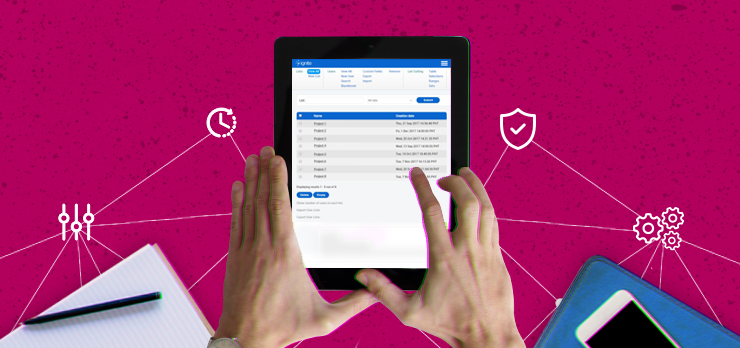We’ve been throwing the term “marketing automation” around for about some time now, and while businesses have yet to fully realize the potential of automating even the smallest of marketing processes, we feel that knowing what makes an automation tool the right tool, is a step in the right direction for marketers.
Here are some features of marketing automation tools we think are essential for creating long-term benefits:

Analytics
As marketers, we know the value of data: Understanding how our consumers think and act can help us create meaningful and verified marketing strategies. A good automation tool ought to be able to capture and record key user actions and provide insights on specific points in, say, a consumer’s purchasing funnel. Automation tools nowadays go hand-in-hand with dedicated insights tools like Google Analytics to help marketers track both macro-conversions and micro-conversions (percentages of leads generated or sales completed vs. smaller user engagements such as website navigation), so evaluate your needs and priorities accordingly.

Lead scoring and grading
One major goal of analytics is to identify and capitalize on growth opportunities. Provided marketing and sales teams are on the same page with regard to the ideal prospect profile, an automation tool with lead scoring and grading can help streamline communication between teams. This feature essentially looks at a lead’s level of interest; a lead is automatically scored based on a certain level of activity (if, for example, buying signals are detected), and then assigned a grade according to the predefined customer profile. Leads that fit the bill are then sent to sales reps for follow up. If set up properly, lead scoring and grading can save your company both time and resources.

Email campaign management
Email marketing is a machine whose moving parts can prove difficult to operate if not kept well-oiled, but who has the time or the patience to see to the tiny nuts and bolts of the process? Here’s where your marketing automation tool comes in. The best tools can be set to run backstage by essentially taking your contacts — existing and potential subscribers alike — and funneling them into targeted campaigns based on specific subscriber behaviors, interests, interactions, etc. Some campaigns can even be triggered by specific events (such as a new subscription to your blog or site), pre-determined calendar dates, or even certain lead scores.

Social engagement and promotion
Social media is now an inherent part of the marketing strategy, and an automation tool with social functionality can give you complete control over your content and campaigns across multiple platforms. Consider your goals. Perhaps you want to boost consumer engagement: Some automation tools can easily create applications such as polls and sweepstakes and seamlessly incorporate these into your landing pages to get people to interact, essentially boosting your message.
The best tools, however, are able to automate social tasks without removing the human element from your strategy. And combined with social analytics and social campaigns, social engagement and promotion will ensure that you stay on top of everything.
Not sure where to start? Check out Ignite.
—
Sources:
Bewsher, Doug. (January 27, 2015). The future of marketing automation depends on data analytics at scale. Retrieved from https://venturebeat.com/2015/01/27/the-future-of-marketing-automation-depends-on-data-analytics-at-scale/
Creech, C. (June 25, 2014). The 5 Must-Use Marketing Automation Features. Retrieved from https://www.newfangled.com/most-important-features-of-marketing-automation/
Czajka, S. (March 11, 2016). Google Analytics vs. Marketing Automation: Why You Need Both. Retrieved from https://www.weidert.com/whole_brain_marketing_blog/why-you-need-google-analytics-in-addition-to-marketing-automation
Fernandez, M. (July 7, 2017). 31 Best Email Marketing Automation Tools. Retrieved from https://optinmonster.com/31-best-email-marketing-automation-tools/
Hanington, J. (March 12, 2015). The Top 11 Must-Use Features of Marketing Automation. Retrieved from https://www.pardot.com/blog/the-top-11-must-use-features-of-marketing-automation/
Hoffmeister, M. (July 15, 2013). Marketing Automation 101: Intro to Lead Scoring & Grading. Retrieved from https://www.pardot.com/marketing-automation/marketing-automation-101-intro-to-lead-scoring-grading/
Hollar, K. (July 4, 2012). Tracking with Google Analytics vs. Marketing Automation. Retrieved from https://blog.capterra.com/tracking-with-marketing-automation-versus-google-analytics/
Miller, J. (2012). Mega-List of Features in Marketing Automation (That You Won’t Find in CRM). Retrieved from https://blog.marketo.com/2012/11/mega-list-of-features-in-marketing-automation-that-you-wont-find-in-crm.html
Woopra. (September 19, 2017). The 7 Best Marketing Automation Tools. Retrieved from https://blog.woopra.com/the-7-best-marketing-automation-tools-d4ea76fcf60




